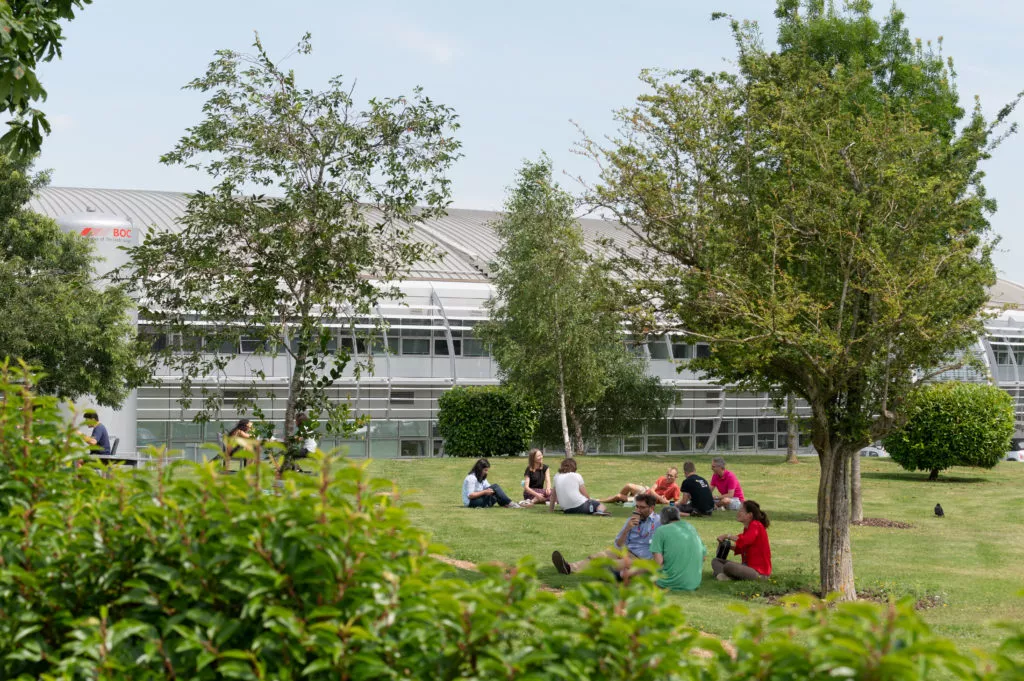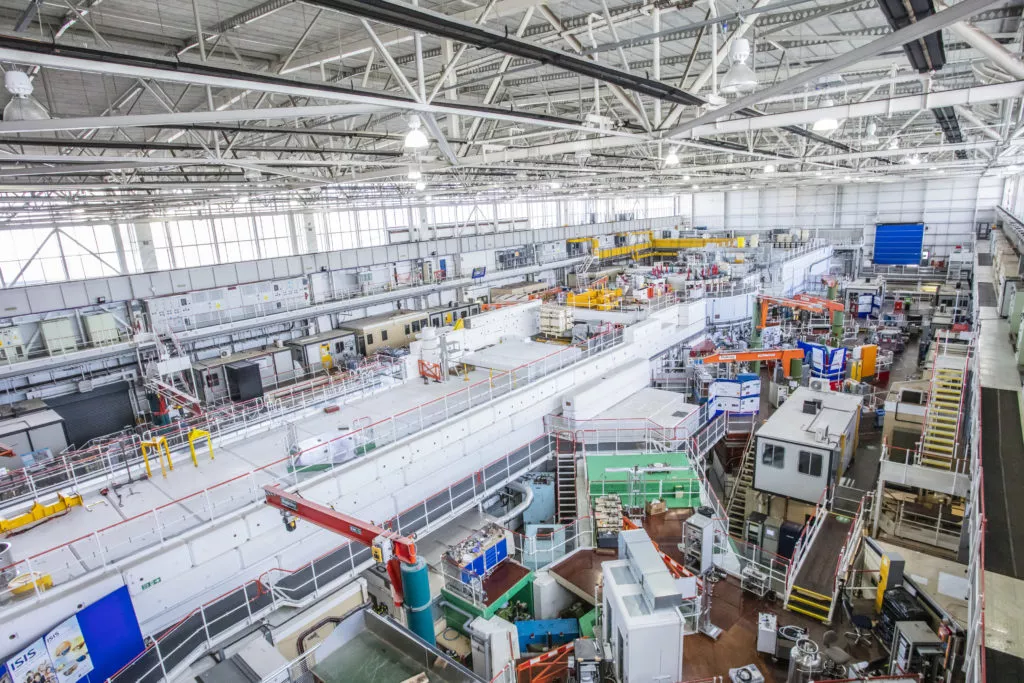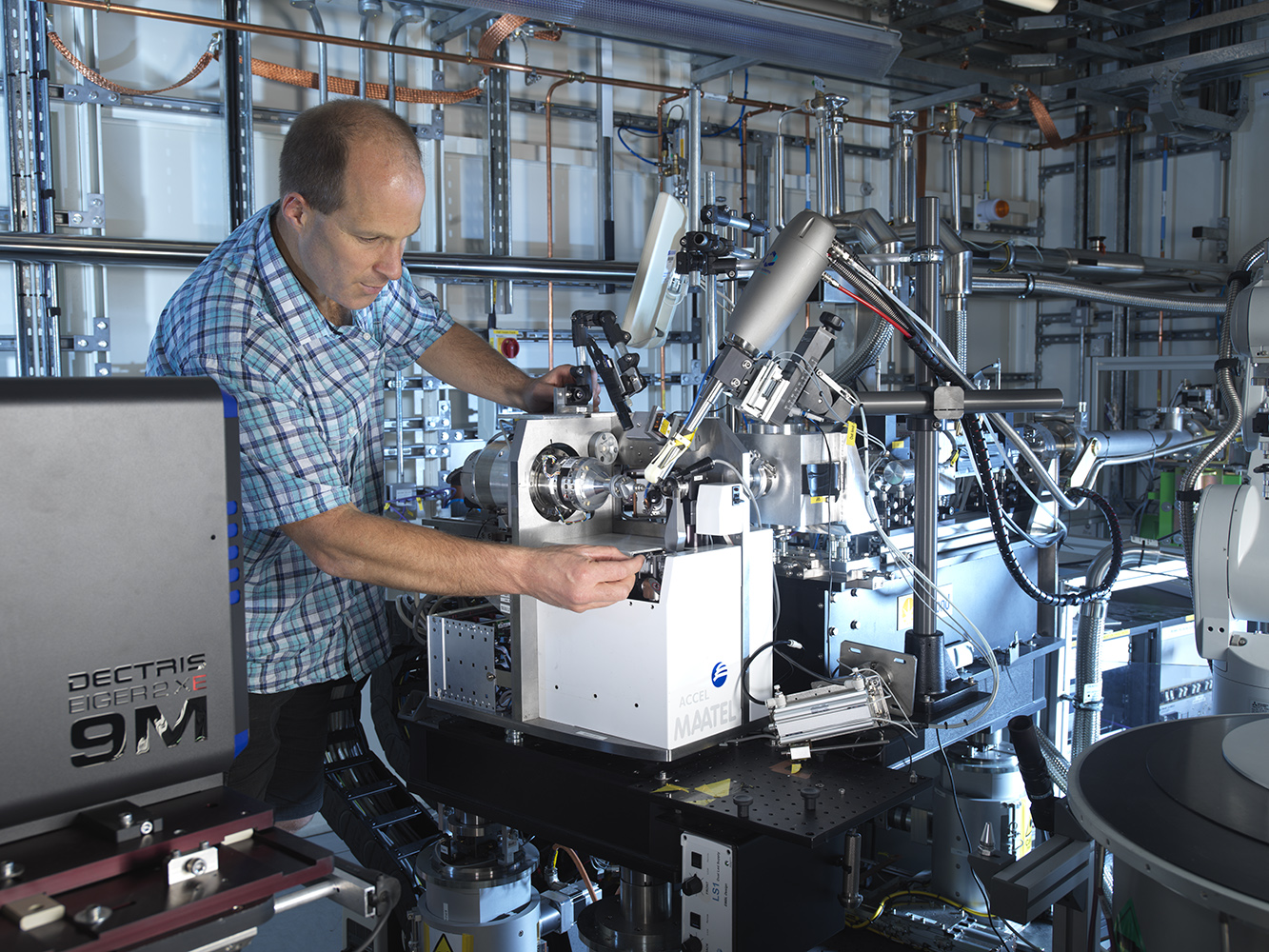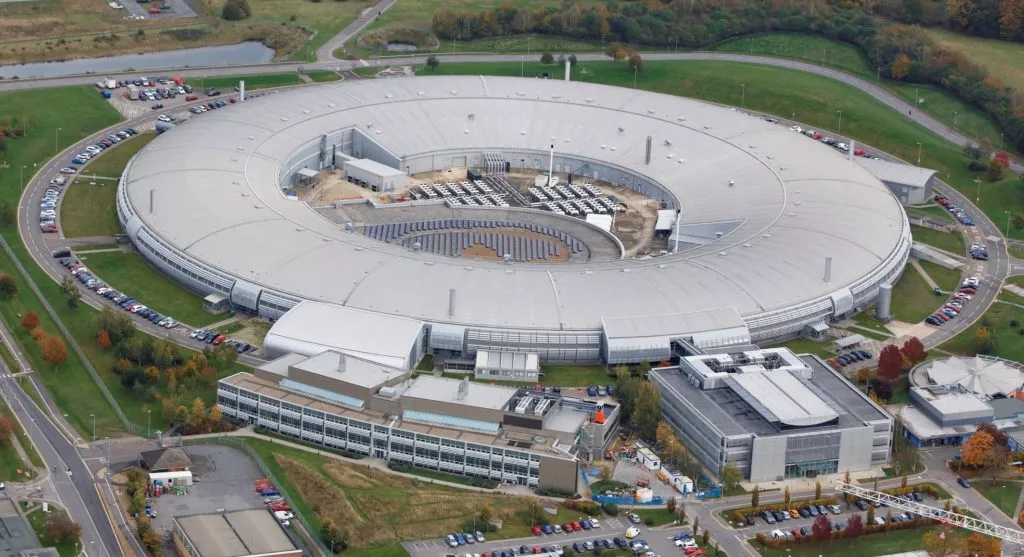
Iconic in design, Diamond Light Source is the world-leading synchrotron is 10,000 times more powerful than a standard microscope. Used for both academic and industrial research, this stadium-sized machine is the only one of its kind in the UK.
What is it?
Diamond Light Source is a world-leading medium energy synchrotron facility producing high intensity x-rays. It works like a giant microscope, harnessing the power of electrons to produce intensely bright light that scientists can use to study anything from fossils to jet engines, viruses to vaccines.
How does it work?
Whether it’s fragments of ancient paintings or unknown virus structures, scientists can use the synchrotron to study their samples. The machine works by accelerating electrons to near light speeds, so they give off a light 10 billion times brighter than the sun. These bright beams are then directed into laboratories known as ‘beamlines’. Here, scientists use the light to study a vast range of subject matter, from new medicines and treatments to innovative engineering and cutting-edge technology.
One of the most advanced scientific facilities in the world, Diamond’s pioneering capabilities are helping to keep the UK at the forefront of scientific research.
Who can use it?
Over 14,000 researchers from across life and physical sciences both from academia and industry use Diamond to conduct experiments, assisted by approximately 700 staff. Whether it’s fragments of ancient paintings or unknown virus structures. The synchrotron is free at the point of access through a competitive application process, provided that the results are published in the public domain.
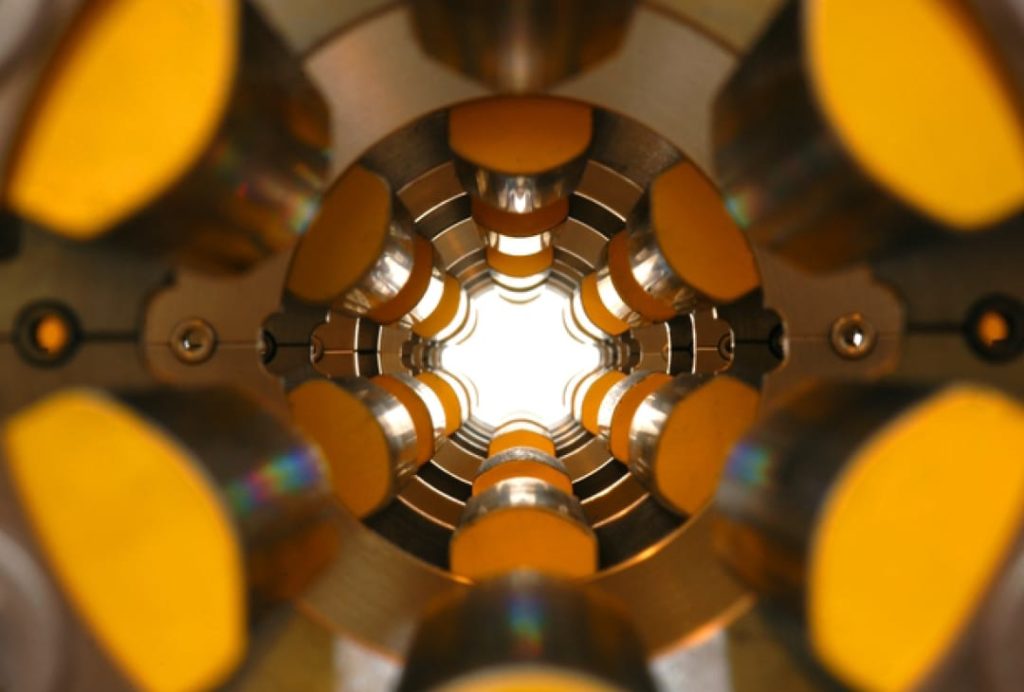
Diamond is one of the most advanced scientific facilities in the world, and its pioneering capabilities are helping to keep the UK at the forefront of scientific research.
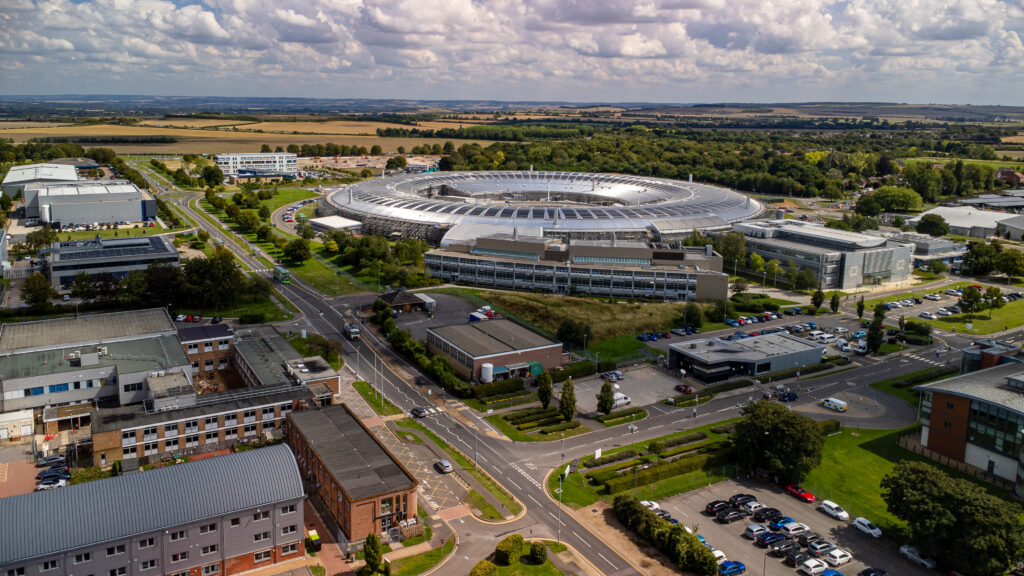
University of Manchester at Harwell
Collocated with the Diamond Light Source, the University of Manchester at Harwell are embedded within the national laboratory with their core team providing expert experimental support, whilst their fellows provide a cadre of expertise in areas of Extreme Science.
Latest events
-
Harwell Book Club
2nd Sep
12:15 – 13:00 | Quad Two, Rutherford Avenue, OX11 0DF
For the next Harwell Book Club in collaboration with Be Free Young Carers…
-
Didcot Café Scientifique – Dr Chris Pearson “The Life of an Atom”
16th Sep
19:30 – 21:00 | Cornerstone Arts Centre, Didcot, OX11 7NE
Have you ever wondered where the carbon in our bodies, the oxygen in the air or…

